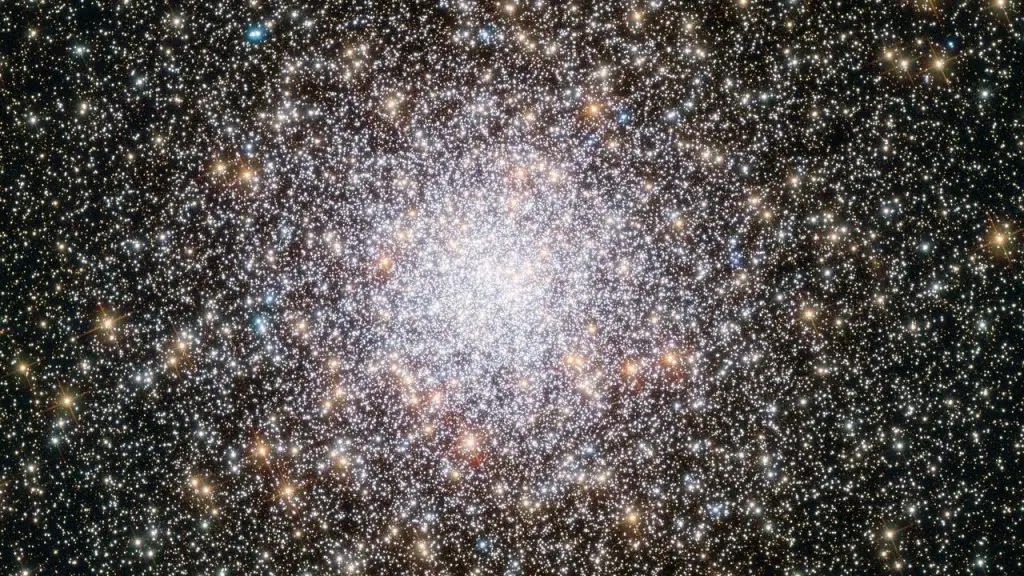 |
| Globular clusters like this one contain hundreds of thousands to millions of stars — including some of the oldest in the universe. (Image credit: NASA Goddard) |
The James Webb Space Telescope (JWST) has unveiled a celestial spectacle at the dawn of the universe. Approximately 440 million years after the Big Bang, the telescope has detected key chemical signatures hinting at the presence of supermassive stars, reaching up to 10,000 times the mass of our sun. These colossal entities, aptly named “celestial monsters,” could hold the key to unraveling mysteries surrounding the early universe’s composition of heavy elements.
Lead study author Corinne Charbonnel, an astronomy professor at the University of Geneva, expressed excitement over the findings. The data collected by the JWST has provided the first tantalizing clue about the existence of these extraordinary stars. The study, published in Astronomy and Astrophysics on May 5, sheds light on how our universe might have been seeded with heavy elements during its infancy.
Researchers focused their attention on globular clusters—dense collections of tens of thousands to millions of stars, some of the oldest formations in the universe. These clusters, scattered throughout our Milky Way, serve as time capsules, offering glimpses into the early years of cosmic evolution. Astonishingly, certain stars within these clusters display significant variations in elemental proportions, such as oxygen, nitrogen, sodium, and aluminum, despite forming from the same gas and dust clouds 13.4 billion years ago.
The discrepancy in elemental composition has led astronomers to propose the existence of supermassive stars, born in the denser conditions of the early universe. These cosmic giants, burning at exceptionally high temperatures, could have produced heavier elements, influencing the composition of smaller, surrounding stars.
However, the direct identification of these supermassive stars proves challenging. With sizes ranging from 5,000 to 10,000 times that of the sun and burning at temperatures exceeding 135 million degrees Fahrenheit, these fiery giants met their demise in hypernovas, violent explosions that occurred early in the universe’s history. Co-author Mark Gieles, a professor of astrophysics at the University of Barcelona, highlighted the difficulty in detecting direct traces due to the rapid demise of superstars within the observable globular clusters.
To overcome this challenge, the researchers turned
the JWST’s infrared camera towards the galaxy GN-z11, one of the most distant
and ancient galaxies ever discovered, situated 13.3 billion light-years away.
By analyzing the light emitted from different globular clusters within GN-z11,
the astronomers identified tightly packed stars surrounded by elevated levels
of nitrogen. This observation aligns with the combustion of hydrogen at
extremely high temperatures, a phenomenon only achievable in the cores of
supermassive stars.




0 Comments